Warm Weather Cancels Snow Outlaws Round 2
By Wayfarer |
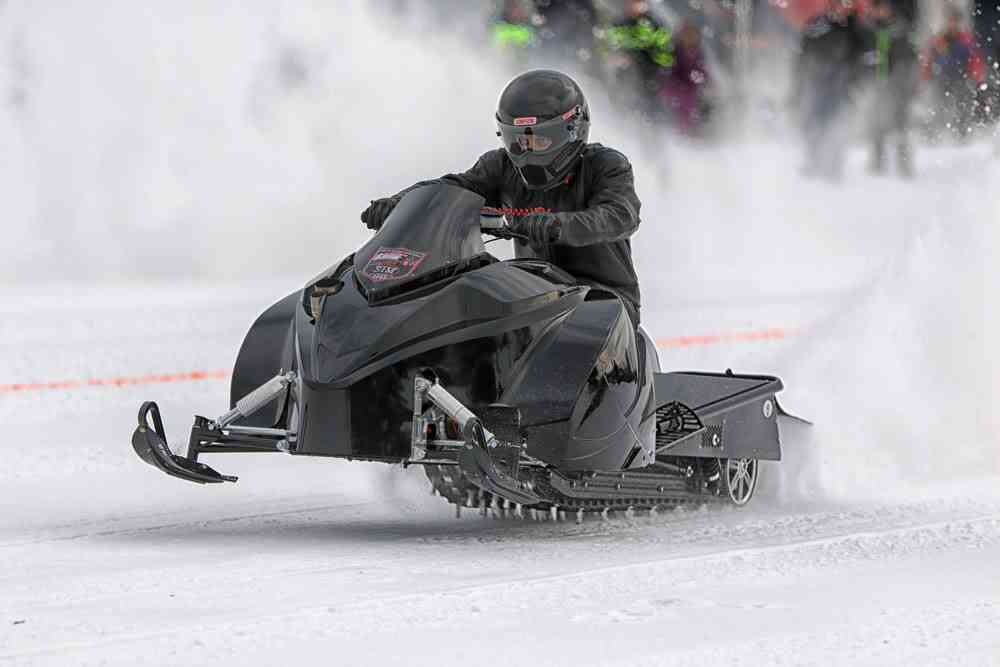 Snow Outlaws snowmobile drag racing series — race cancellation announcement
CANCELLED event: STM Powersports Snow Outlaws The Pioneer / Long Lake Shootout
originally scheduled: February 17-18, 2023
where: N1690 County Highway M, Sarona, Wisconsin, USA
It seems that the phrase “hottest show” in snowmobile drag racing is being taken too literally. Following “hot” on the heals of a brutally cold Friday night session on Rice Lake, an unseasonably warm Wisconsin has forced the STM Powersports Snow Outlaws series to cancel their second round of 2023.
Originally scheduled for February 17-18 on Sarona’s Long Lake, bad ice there had Snow Outlaws planning a return engagement at Rice Lake. But even that is off the table as warm, sunny days are thinning Rice Lake’s ice and producing no new snow.
So the world’s quickest nitro, alcohol, supercharged and turbocharged sleds and the teams that race them will have to wait until March 3-4 and the Weenie Roast World Finals at Lakewoods Resort in Cable, Wisconsin.
Pro Outlaw, Pro Xtreme 55, and Pro Mods will all converge for the legendary Weenie Roast festival for high speed thrills and late night swills. Team owners and riders such as Chris Connelly, Jeff Ratzlaff, Mike Allen, Dominick Ernst, Brian and Corey Sullivan, Alec Gibas, Lance Flathers, Ethan Erhardt, Jeremey Hannen, Kyle Shilts, Samson Exhaust’s Mike Baverstock, Matt Musselman, Samantha Martin, Tom Brennan, Ryan Rowe, Andy Gosch, Casey Down, Anthony Tondryk, Blake Saltzman, Tyler Stelton and more will race the Lakewoods 500 foot track.
Chad and Jenny Nyhus regret that even the Snow Outlaws track-building magicians can’t conjure up a race track without snow and ice, but look forward to welcoming their drag racing family back to action at the Weenie Roast in March.
Snow Outlaws snowmobile drag racing series — race cancellation announcement
CANCELLED event: STM Powersports Snow Outlaws The Pioneer / Long Lake Shootout
originally scheduled: February 17-18, 2023
where: N1690 County Highway M, Sarona, Wisconsin, USA
It seems that the phrase “hottest show” in snowmobile drag racing is being taken too literally. Following “hot” on the heals of a brutally cold Friday night session on Rice Lake, an unseasonably warm Wisconsin has forced the STM Powersports Snow Outlaws series to cancel their second round of 2023.
Originally scheduled for February 17-18 on Sarona’s Long Lake, bad ice there had Snow Outlaws planning a return engagement at Rice Lake. But even that is off the table as warm, sunny days are thinning Rice Lake’s ice and producing no new snow.
So the world’s quickest nitro, alcohol, supercharged and turbocharged sleds and the teams that race them will have to wait until March 3-4 and the Weenie Roast World Finals at Lakewoods Resort in Cable, Wisconsin.
Pro Outlaw, Pro Xtreme 55, and Pro Mods will all converge for the legendary Weenie Roast festival for high speed thrills and late night swills. Team owners and riders such as Chris Connelly, Jeff Ratzlaff, Mike Allen, Dominick Ernst, Brian and Corey Sullivan, Alec Gibas, Lance Flathers, Ethan Erhardt, Jeremey Hannen, Kyle Shilts, Samson Exhaust’s Mike Baverstock, Matt Musselman, Samantha Martin, Tom Brennan, Ryan Rowe, Andy Gosch, Casey Down, Anthony Tondryk, Blake Saltzman, Tyler Stelton and more will race the Lakewoods 500 foot track.
Chad and Jenny Nyhus regret that even the Snow Outlaws track-building magicians can’t conjure up a race track without snow and ice, but look forward to welcoming their drag racing family back to action at the Weenie Roast in March.
* * * * * * * * * * * * * * * * * * * * * * * * * * * * * * * *
Click Like and Follow Bikernet.com Official Facebook Page. No bots will follow you home: https://www.facebook.com/bikernetbiker
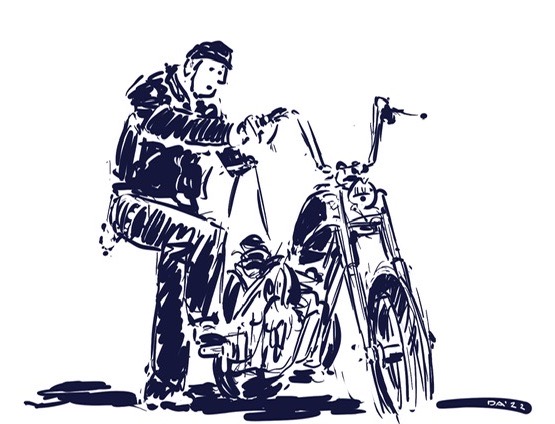
Harley-Davidson launches H-D Collections Apparel
By Wayfarer |
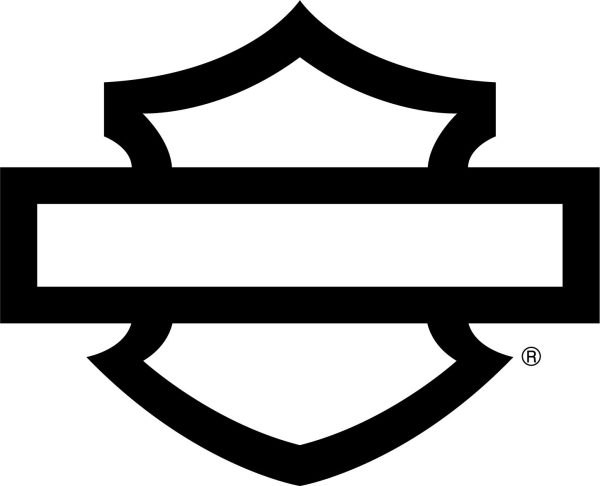
HARLEY-DAVIDSON LAUNCHES H-D COLLECTIONS, A GROUPING OF LIFESTYLE APPAREL LINES DEFINED BY HERITAGE AND CRAFTSMANSHIP
Building on 120 years of moto culture, H-D Collections honors the past, while driving Harley-Davidson apparel into the future
MILWAUKEE (Feb. 13, 2023) – Harley-Davidson is excited to announce H-D® Collections, a grouping of unique and distinct lifestyle apparel lines, defined by the heritage and authenticity of Harley-Davidson, the most desirable motorcycle brand in the world, will launch on hdcollections.com on March 9, 2023.
With over 120 years of craftsmanship and heritage under its belt, Harley-Davidson has shaped motorcycle culture while driving its relevance far beyond the world of two wheels. As part of H-D’s continued growth strategy, H-D Collections aims to connect authentically with consumers who identify with the adventurous spirit of Harley-Davidson. Through curated products, experiences and collaborations, H-D Collections seeks to honor the past, while driving the motorcycle brand into the next 120 years and beyond.
“With H-D Collections we’re excited to celebrate two elements of our heritage: design and craftsmanship,” said Jochen Zeitz, Chairman, President and CEO, Harley-Davidson. “H-D Collections brings together the many facets of moto-culture lifestyle, paying tribute to our heritage with both Harley-Davidson Originals and Authorized Vintage, while pushing the limits of design, form and function with Bar & Shield.”
H-D Collections is launching with three unique product lines: Bar & Shield by Harley-Davidson, Harley- Davidson® Originals, and Harley-Davidson® Authorized Vintage, in addition to planned collaborations.
· Bar & Shield by Harley-Davidson is a new, elevated lifestyle product line. Mirroring the study and craftsmanship associated with Harley-Davidson heritage, Bar & Shield is inspired by the unique combination of engineering, functionality and motorcycle culture. The line, which takes its name from the phrase historically used to describe the classic Harley-Davidson logo, is designed by Creative Director of Apparel Design Louise Goldin and her team to bring a new spirit into the evolution of Harley-Davidson apparel.
· Harley-Davidson® Originals looks to the brand’s rich heritage for inspiration, coming to life as a modern interpretation of the classics. The items in this product line embody the history of Harley- Davidson worn by fearless racers, notable personalities, artists, everyday riders and enthusiasts for generations.
· Harley-Davidson® Authorized Vintage is genuine, archival, and collectible. Painstakingly sourced and thoroughly vetted, the product line is a collection of rare H-D® apparel throughout history, certified by H-D’s historians with certificates of authenticity. H-D Authorized Vintage is rich with stories of adventure, rebellion and the American spirit, positioning these items among the most desirable in the vintage apparel market. Consumers can look forward to an ever-changing array of vintage t-shirts, sweatshirts, accessories, vests, jackets and leathers, as well as monthly drops with rich Harley-Davidson stories.
· Harley-Davidson® Collaborations will see Harley-Davidson partnering with creatives and brands in celebration of moto-culture lifestyle – coming soon in 2023.
H-D® Collections will come to life through apparel, unique retail experiences, and partnerships rooted in the spirit of Harley-Davidson moto-culture, reaching new and existing fans of the brand. As H-D Collections evolves, additional lines and collaborations will be introduced and designed by Louise and her team, based out of the H-D Design Studio in New York City.
Beginning March 9, 2023, H-D Collections will be available for purchase at www.hdcollections.com and will pop-up at select cultural events & festivals, starting with Austin, TX March 10-14.
* * * * * * * * * * * * * * * * * * * *
Quick, get into the Cantina to get extensive archive of over 25 years. Click to know more.
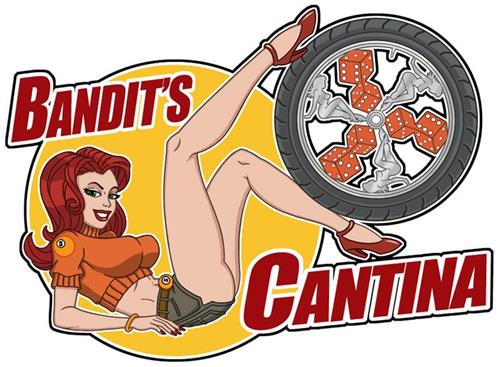
World’s Oldest Production Motorcycle Sells For $212,000
By Wayfarer |
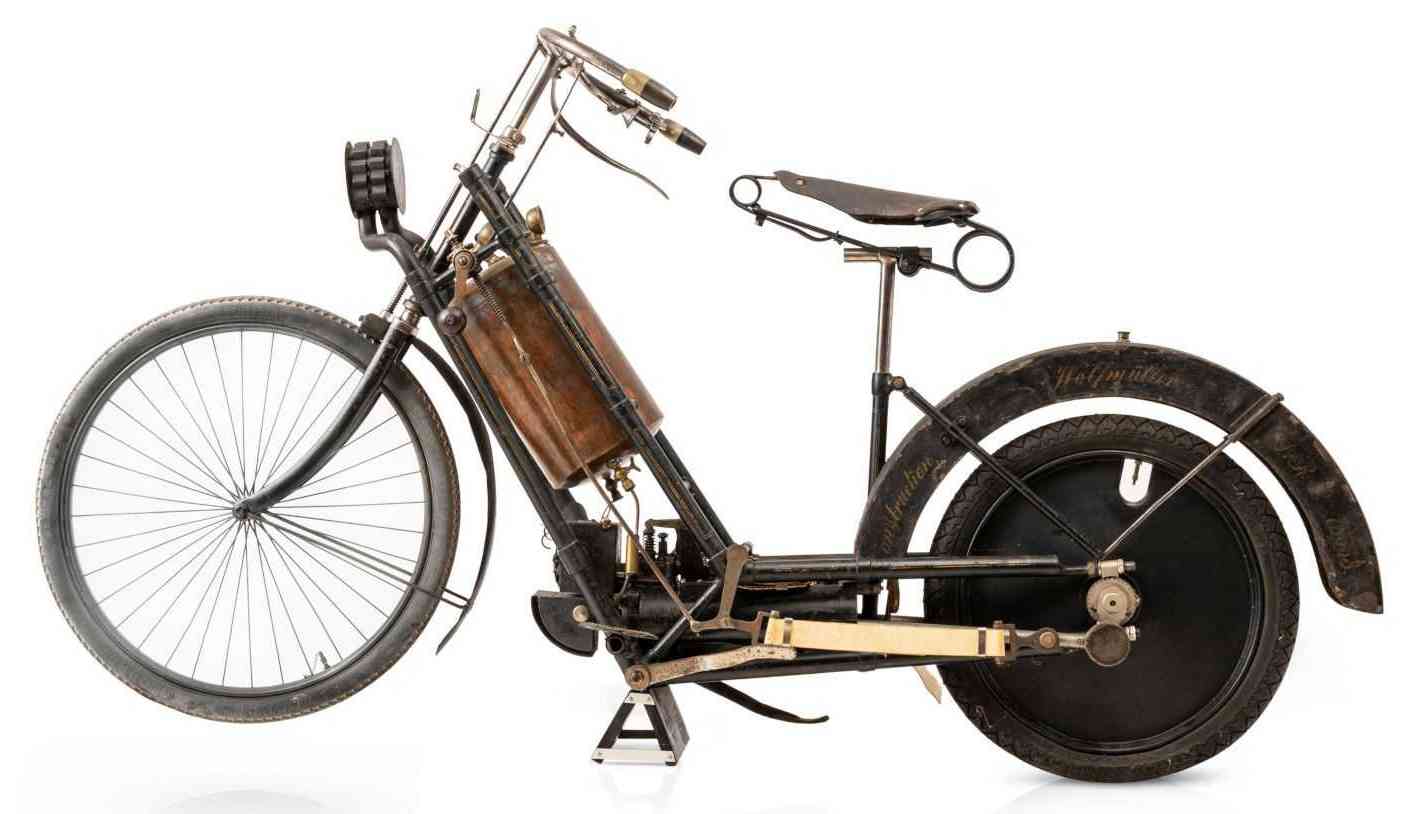
This example may be the earliest one still in existence in 2023.
World’s Oldest Production Motorcycle Sells For $212,000 At Auction
by Janaki Jitchotvisut from https://www.rideapart.com
The early days of motorcycling were a wild time. From strapping engines to the frames of unsuspecting bicycles, to steam-powered velocipedes, people were eager to find new and improved ways to get around. New technological frontiers are typically a time of great experimentation, and this era in motorcycling was certainly no different.
In February, 2023, an extremely interesting piece of that early history went up for auction at Bonhams Paris The machine in question is an extremely rare 1894 Hildebrand & Wolfmüller, which bears the reputation of “the first powered two-wheeler to enter series production,” as well as the first vehicle to be called by the name “motorcycle” (or “motorrad,” in German). It ultimately sold for €195,500, or roughly $212,000 Yankee dollars including the premium.
Brothers Heinrich and Wilhelm Hildebrand set to work crafting their first powered two-wheeler designs during the crucial transition between steam-powered and gasoline-powered vehicles. As the story goes, they started with steam, but eventually turned to a two-stroke design in cooperation with two other individuals: Alois Wolfmüller and his mechanic Hans Geisenhof.
Development is often an iterative process, and what the team eventually came up with to make this production vehicle was a water-cooled, four-stroke, parallel twin engine with what must have been a breathtaking displacement at the time: 1,489cc. This reportedly made about 2.5 brake horsepower at 240 RPM, and resulted in a machine that could top out around 30 miles per hour. That might seem terribly slow in 2023, but was likely more impressive in a time when motor vehicles (let alone faster ones) weren’t so commonplace.
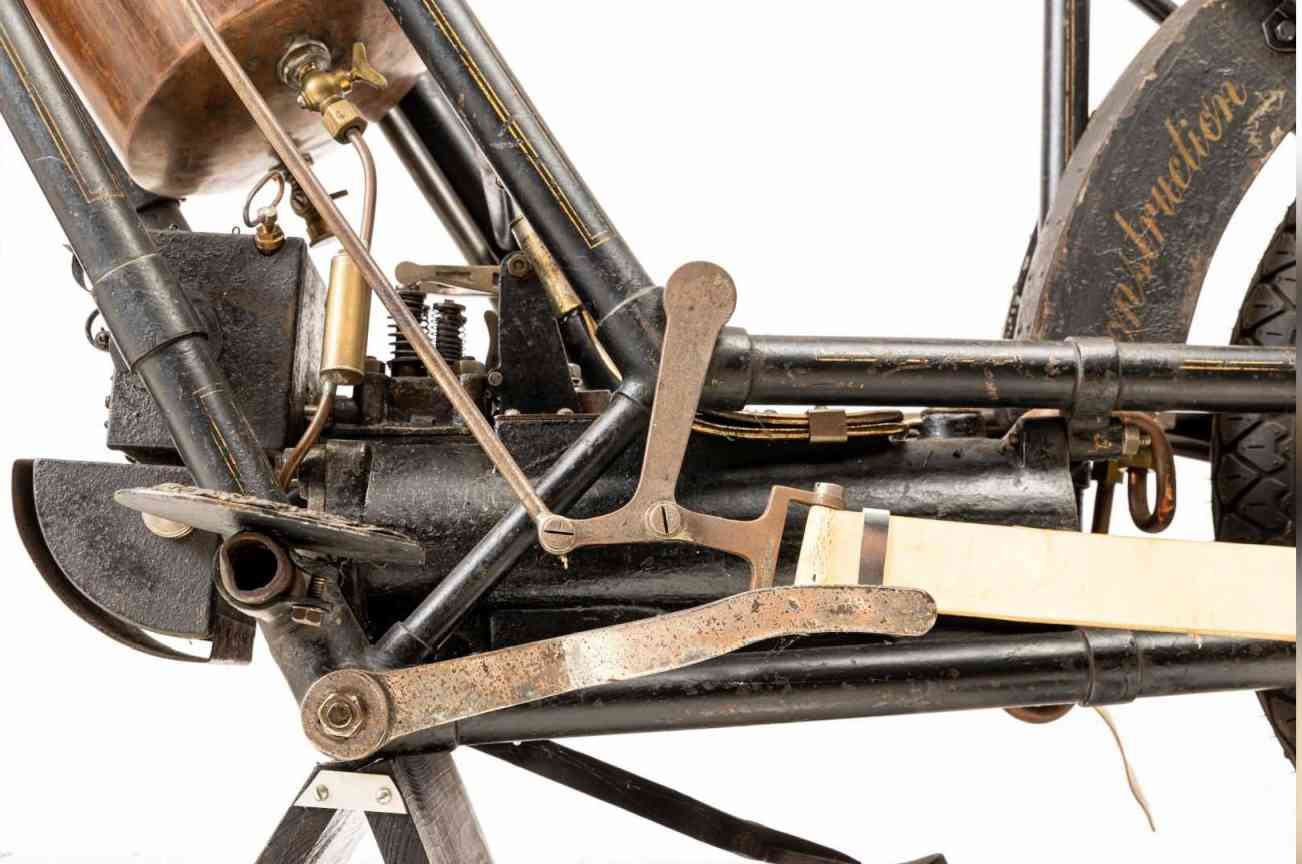
If this machine seems like an alien contraption to your modern eyes, that’s because it’s quite different from any motorcycle we know today. Here’s how the Bonhams listing describes some key features of this bike:
“Steam locomotive practice was further recalled by the long connecting rods directly linking the pistons to the rear wheel, which opened and closed the mechanical exhaust valves via pushrods actuated by a cam on the hub. The latter contained an epicyclic reduction gear and there was no crankshaft flywheel, the solid disc rear wheel serving that purpose. Rubber bands assisted the pistons on the return stroke. Fuel was fed from the tank to a surface carburetor and thence via atmospheric inlet valves to the cylinders where it was ignited by platinum hot tube, as developed by Daimler. The box-like rear mudguard acted as a reservoir for the engine’s cooling water, while one of the frame tubes served as the oil tank. The tires, manufactured under license from Dunlop by Veith in Germany, were the first of the pneumatic variety ever fitted to a motorcycle,” it reads.
Also, this bike didn’t have a clutch. Instead, the starting procedure involved pushing it until the engine fired up, then jumping into the saddle and riding it wherever you needed to go. (Perhaps it wasn’t only the world’s first production motorcycle, but also the world’s first production exercise bike?)
The design for this bike was patented in 1894, and the machines were produced both in Munich, by parent company Motofahrrad-Fabrik Hildebrand & Wolfmüller , and also under license in France as La Petrolette. People of the time were reportedly optimistic about the new bikes, but their optimism was soon tinged with regret and demands for their money back due to starting difficulties and unsatisfactory running performance. By 1897, after French licensee Duncan, Superbie et Cie lost a court case with a customer about these issues, both the German and French concerns went bust. It’s unclear how many of these machines were ever made, but it’s believed to be somewhere between 800 and 2,000 in total.
This specific example is believed to be the earliest numbered example still existing today, with frame number 619 and engine number 69. It was last sold in 1990, and documentation that accompanies this sale includes papers from that time, as well as period marque literature (mostly, if not all, in German). The tires and bands have been replaced (and one of the bands needs replacing yet again), but this bike is otherwise in mostly untouched condition—which makes it even more remarkable, given the fact that it’s almost 130 years old.
* * * * * * * * * * * * * * * * * * * * * * * *
Never miss the buzz while making a beeline !!! Click & Subscribe to the free weekly newsletter.

Moto Ouroboros: Praga ZS 800
By Wayfarer |
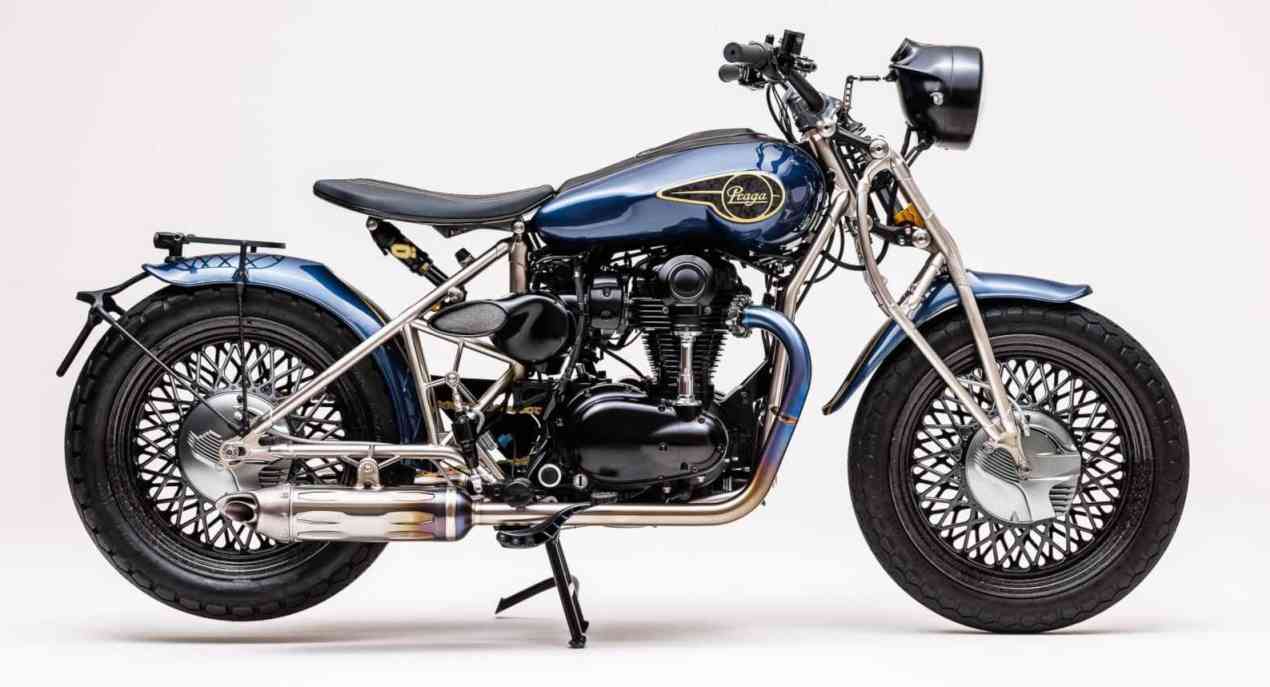
Moto Ouroboros: Praga ZS 800 Melds 1930s Style With 2020s Technology
Just 28 of this very special machine will ever be made.
by Janaki Jitchotvisut from https://www.rideapart.com
In November, 2022, Czech company Praga announced its upcoming, extremely limited-edition Bohema hypercar, of which just 89 units are reportedly planned for production. For those interested in an even more exclusive motorcycle, though, there’s the Praga ZS 800.
Just 28 of these bikes will ever be made, with that number’s significance harking back to the year 1928. Although this machine could only be made with 21st-century technologies, it draws influence from the 1928 Praga BD 500 for its design. The result is the seemingly timeless piece of rolling sculpture you now see before you.
It’s built around a Kawasaki W800 engine, which freed Praga up to craft all the other, much more interesting bits of this bike. The forged carbon-fiber wheels, for example, feature wholly integrated hydraulic drum brakes. You’ve got five-axis-machined steel girder front forks up front for form, along with a fully adjustable Öhlins TTX suspension for function. The 18-inch, extremely special wheels come wrapped in Dunlop Roadsmart rubber—and really, just take a moment to gaze at that rather lovely titanium exhaust, as well as the exquisite rear rack with integrated taillight and indicators.
The 11.5-liter fuel tank is a structural element in the frame for added weight savings. As a result, Praga says that the dry weight of this bike tips the scales at just 142 kilograms—or a hair over 313 pounds. Even once you add fuel, the resulting machine comes in at a claimed 158 kilograms, or 348 pounds—which is still pretty impressive.
The W800 engine at its heart is a 773cc, air-cooled parallel twin that makes a claimed 50 horsepower and 65 newton-meters (47.9 pound-feet) of torque. It’s mated to a five-speed gearbox, which is well and good. However, Praga also says that it’s achieved 50/50 weight distribution on the ZS 800—which should showcase this mill in its best light.
“Strong and extremely lightweight materials – such as carbon, titanium, chrome molybdenum steel and aviation duralumin – enabled us to reimagine the rigid rear wheel suspension, the front swingarm fork, and the hydraulic drum brakes,” ZS 800 chief designer Jan Žuži said in a statement.
“These futuristic materials and Praga sports division’s latest production facilities have enabled us to transfer those elegant historical design elements to the present day, and to build a motorcycle with contemporary driving characteristics and a unique feel,” he added.
If all goes according to plan, Praga plans to start deliveries of the ZS 800 sometime in mid-2023. Only 28 of these bikes will ever be made, with a price tag of £75,550 (about $91,797 at current conversion rates) apiece, not including tax.
Watch Video:
* * * * * * * * * * * * * * * * * * * * * * * *
Keep up with the motorcycling industry with Bikernet.com Free Weekly Newsletter. Click to know more.

Yamaha Fulfills $500,000 Pledge in Outdoor Access Initiative Grants
By Wayfarer |
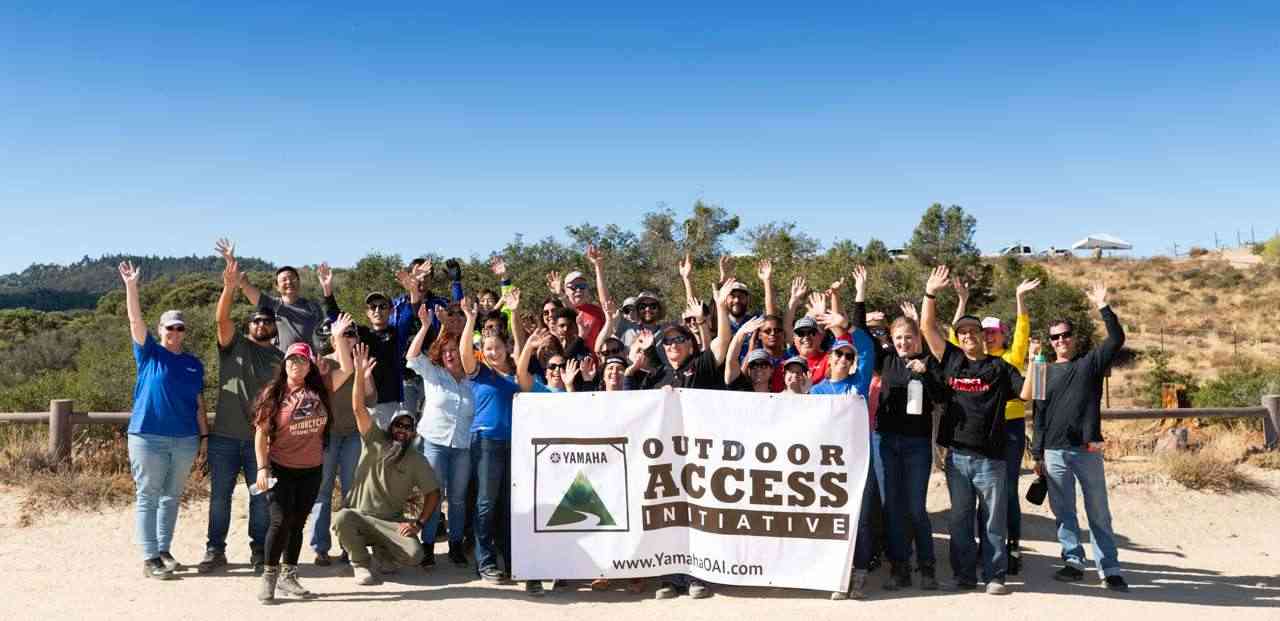
Yamaha Outdoor Access Initiative’s 2022 Q4 Grants Fund Large-Scale Riding Area Clean Up and Essential Trail Maintenance Projects Protecting Access to Land for Motorized Recreation
MARIETTA, Ga. – February 9, 2023 – Yamaha Motor Corp., USA, today announces the Yamaha Outdoor Access Initiative (OAI) contributed more than $500,000 in grant awards for 2022, satisfying a commitment made in honor of National Public Lands Day. The final funding cycle for 2022 in the fourth quarter provided meaningful support to a wide variety of projects – from California desert cleanup and state-wide riding trail maintenance in Washington to multiuse bridges and trail resurfacing – making public lands sustainably accessible for motorized and outdoor recreation.
“The response from the outdoor community to our call for quality projects the Yamaha Outdoor Access Initiative can fund is the reason we were able to fulfill our 2022 pledge. While half a million dollars will make a significant impact, we know there are more opportunities out there in need of support,” said Steve Nessl, Yamaha’s motorsports marketing manager. “In 2023, our commitment is unchanged as we continue to invite and welcome partnerships with land managers, riders, land stewards, and anyone who relies on public land for outdoor recreation. Together we will work to protect, defend, and improve access everyone can enjoy for years to come.”
The application deadline for consideration in the first funding cycle of 2023 is March 31. Visit YamahaOAI.com to learn how to apply for a grant and review the submission guidelines. There, you also will find the Yamaha OAI grant application form, as well as the informative blog, which includes recaps of typical projects for inspiration.
The powersports industry leader in delivering critical resources to those working to make public land available for motorized and outdoor recreation had a strong finish for 2022 with more than $195,000 in grants to projects nationwide. Projects funded in the 2022 fourth quarter grant cycle include:
Central Colorado Mountain Riders
- Clean-Dezert (California)
- Eleva-Strum Trail Riders (Trempealeau County, WI)
- Idaho West Magic Lake Recreation Club (West Magic, ID)
- Mad River Ridge Runners (Washington County, VT)
- Northwest Motorcycle Association (Washington)
- Sierra Buttes Trail Stewardship (Quincy, California)
- The Sierra Foundation (Prather, CA)
About the Yamaha Outdoor Access Initiative: Since 2008, the Yamaha Outdoor Access Initiative has led the powersports industry in supporting responsible access to our nation’s public lands for outdoor enthusiasts. Website: YamahaOAI.com
* * * * * * * * * * * * * * * * * * * * * * * * * * * * * * * *

THE NORMAL OR CRAZY BIKERNET WEEKLY NEWS for February 9th, 2023
By Bandit |

Hey,
I’ve been in touch with guys and girls all over the industry. It’s 20 degrees here in Sturgis and light snow flurries block the sun but motorcycle action is everywhere. Shows, auctions and action is happening even in the coldest areas. Hell, in my small shop I’m building two bikes and preparing for road testing of the Salt Torpedo.

I’m scrambling to post more chapters of my Chance III book and it looks like I might be writing a non-fiction Life and Times book about a good friend I met in Daytona in 1971. Plus, Barron would like me to read his recent book and write a review, quick.

I spoke to Carl Pussar, who is running all over the east coast to shows, while building a hot rod Sportster with a 6-speed transmission from Baker. Baker doesn’t make a 6-speed for Sportsters anymore, but Carl was able to find the parts to make it happen.

No matter how crazy the government gets, us outlaws will still build cool shit and fight to ride free.

Let’s hit the news:

The Bikernet Weekly News is sponsored in part by companies who also dig Freedom including: Cycle Source Magazine, the MRF, Las Vegas Bikefest, Iron Trader News, ChopperTown, BorntoRide.com and the Sturgis Motorcycle Museum. 


CO2-INDUCED GLOBAL GREENING AND COOLING
Yes, cooling. A bit at least. A new study in Nature Communication (h/t NoTricksZone) adds to the evidence that additional CO2 in the air is driving an explosion of greening around the world.
Based on satellite measurements over the period 2001-2018 the authors found that, as is generally held, the world has been getting more green. But then they decided to look at what the extra greening meant for local temperatures and found something very interesting. For about 70 percent of the world, they found that more green meant lower temperatures.
Yes, plants cool things off. And while it’s not enough to reverse the overall warming trend entirely, in places like China and India where local land use policies have been focused on enhancing forest cover and irrigated agriculture, it has offset 20 to 40 percent of the temperature increase. Might be something worth putting into a climate model.
–Climate Discussion Nexus



NEWS FROM THE BIKERNET STOCK EXCHANGE–
Third-Largest U.S. Pension Sells Alibaba, TSMC, and MGM Stock. It Bought Harley-Davidson.
One of the largest U.S. public pension plans made big changes in its investments, including Asian tech giants. The New York State Common Retirement Fund cut its investments in Alibaba Group Holding (ticker: BABA), Taiwan Semiconductor Manufacturing (TSM), and MGM Resorts International (MGM), and doubled a stake in Harley-Davidson (HOG) in the fourth quarter.
The fund disclosed the stock trades, among others, in a form it filed with the Securities and Exchange Commission.
The office of New York
Read in Barron’s: https://stocks.apple.com/AfIjCm3r2Qo-W2gxRpZb9SA
–Geno
Official Investment Counselor
Bikernet Stock Exchange


DON’T FORGET VALENTINES DAY—
An Announcement from Nash Motorcycle Company
Nash Motorcycle Co. Valentine’s Day Sales run!

Next up 35% OFF on ALL N.M.C. Parts!
– USA MADE AND MATERIALS!!! –
USE PROMO CODE : VDPRTS23
PARTS SALE BUY NOW



BREAKING NEWS FROM THE BUB 7 STREAMLINER CREW—
Denis Manning and the BUB 7 Racing Team are seeking a new Pilot for the BUB SEVEN Motorcycle Streamliner. If you meet the requirements below (please read completely before responding) and would like to be considered for the position, please send us an email at bub7even@gmail.com with the word “PILOT” in the subject line and tell us why you should be the next pilot of the BUB Seven Motorcycle Streamliner.
If you would like to help Denis out please share this post with your friends and groups. Thank you, The BUB 7 Racing Team. Are you an exceptional individual with a passion for speed and motorcycle racing. Do you have the dedication it takes to break world records and make history?
–Robert Collier
BUB BOOKS LLC
bub7even@gmail.com
If you want to investigate Denis Manning and the team efforts over the years, you might consider ordering his stellar books. It will tell you all you need to know about Denis and his history on the salt, the culture, the adventure and the risks.
–Bandit 

OLD 45 FLATHEAD CHOPPER DEAL OF THE WEEK—
1943 Harley-Davidson h-d flathead chop
£14,750
Seller’s Description
Classic Harley 45 chopper, 1942 WLA engine (rebuilt less than 500 miles ago), original three-speed ‘box (rebuilt), converted to foot-change (easily converted back), built by the legendary Phil Piper in 1995 (ex-BSH project build), Rick James frame, black n’ flames paint by Steve Studd, rewired, new Wassell carb, lovely to ride (not fast!) but doesn’t get used as much as it should so …
sfnik@hotmail.com
–Nik Samson
Brandon, England


“I see that there’s a lotta people here. I was once a Marine on Guadalcanal. Those were tough times. I found a cow in the bushes and taught it to walk in a circle. I voted for George Washington at the Delaware Rose Bowl.
I was quarterback and the kids would come up to me and look at the hairs on my legs. King Arthur let me ride his horse in the Kentucky Derby. It was there I saved my first economy. Gas was not invented yet but I found some in the kitchen. We need to learn how to learn things.
I remember my pappy used to tell me about how when we were slaves in Georgia that coffee was going to be shipped through the Panama Canal. And I put a stop to it! That’s why you can now go into a Starbucks in total safety.
We can cure cancer now with aluminum tablets. Trump lives in palatial surroundings while koalas are burning to death in Australia. I didn’t make that up. I see my good friend Amelia Earhart in the audience, the delegate from Morocco. I built her plane. It’s powered by solar panels that spin real fast.
I’ve always said that tacos without butter are not helping with our disenfranchised apples. Tell me I’m wrong! I dare you!
You’re a dog-faced pony soldier and that is not acceptable. My dogs have been sent to NASA for a special space mission. The State of the Union is good! That makes 51.
If we use Wheat Thins for coins we can save thousands of lives. I know a guy! We can do this! I’ve asked Alley Handroid Ocasio Courtroom to do a little shimmy for me. She asked about my hairy legs. We danced until the cows came. THAT was kind of erotic but I’m joking now.
I see my wife over there making a face. She looks good. We had sex before Hunter was born. Then we stopped. I fell down on my bicycle and that Chinese balloon saved me. God bless China. I am punching Putin and Trump right now! Zippy, The Pinhead taught me about tortillas. I don’t think he’s even Mexican. I’ve opened the borders. Someone said I leave my pants open. Are there horses? You BET there are. You’re eating some now. Julia Childs was funny. Wear a mask! Thank you. Are there kids here?
–from J.J. Solari


STATE LAWMAKERS Honored at 2022 SEMA Show–
As a public servant, California Senator Josh Newman’s mantra has been to put his constituents over politics.
Since his first election to the California Senate in 2016, Senator Newman has routinely gone above and beyond to promote the specialty automotive aftermarket industry in his home state.
Why? His southern California district, which is home to SEMA’s Diamond Bar headquarters, boasts 83 SEMA-member companies. Put into perspective, that number is more SEMA members than most states in the union have in total.
When it came time to select the 2022 winner of the Stephen B. McDonald Lawmaker of the Year award, Sen. Newman had homefield advantage.
By Christian Robinson
SEMA


BIKERNET THOUGHT TEMPLE IS NOW OPEN–
When you love yourself, you attract better. You let all know that you deserve the best by treating yourself well.
Everything starts with how you feel about yourself. Feel worthy. Feel valuable. Feel special. Feel deserving of receiving the best.
It will happen for you.
–Ray Russell
Senior Monk
Bikernet Thought Temple


LIFESTYLE CYCLES DEAL OF THE WEEK—
2020 Harley Davidson Low Rider Special 114-Cubic inch

Only 12879 Miles!
This is a very hard to find Low Rider Special in great condition and ready for you to ride home! Loaded with suspension upgrades and a super powerful 114 inch motor, this is the ultimate twisty mountain road or hand your friends their lunch when you leave them in the dust bike!

* Vance Hines Stage-1 Hi Flow air cleaner
* Vance Hines Stainless 2 into 1 exhaust
* Saddlemen step up seat
* 12-inch T Bars
* Legends front suspension
* Legends rear coil over suspension
* Front fairing
* LED complete light set
* Crashbars

This bike is only $19,995
Plus license, $85.00 documentation fee, and local sales tax. NO HIDDEN FEES like some dealers. And we have no reconditioning or prep fees. This bike has passed Lifestyle Cycles rigorous 92-point safety/mechanical/structural inspection.This motorcycle has not been refurbished and does not come with any warranty expressed or implied!
EXTENDED WARRANTIES are available!
Fill out an online application today. We have EZ FINANCING
Lifestyle Cycles is located at 1510 State College Blvd,Anaheim,CA,92806. Open 7 days a week.
NOT LOCAL? WE HAVE SHIPPING AVAILABLE! Call today (714) 490-0155.
Huge selection of Street Glides, Road Glides, Road Kings, Ultras, Sportsters, Softails, Dynas, and much more!
We are California’s pre-owned Harley Mega-Store with over 200 Pre-Owned Harley-Davidsons in stock! To view our current inventory.


The Boonie Bike World Series returns at the Official Mama Tried Pre-Party on Feb. 16.
Plus, new items from the 120th Anniversary collections are dropping at the Harley-Davidson® Shop.

MILWAUKEE, USA (Feb. 9, 2023) – The Midwest’s favorite motorcycle show – Mama Tried – is back and better than ever in 2023. Get set for a thrilling weekend full of thrills, chills and spills when the Official Mama Tried Pre-Party gives Old Man Winter a swift kick in the lug nuts at MOTOR® Bar & Restaurant on Thursday, Feb. 16.
Rub elbows with your favorite Mama Tried Motorcycle Show builders and cheer on Flat Out Friday racers as they go full throttle on the H-D Museum™ course during the Boonie Bike World Series. Keep the chill away with outdoor fire pits and keep those money makers shaking with tunes from DJ Joey Hollywood. And don’t forget, the H-D Museum, H-D® Shop and Factory Shop will all be open until 8 p.m. on Feb. 16. It’s your chance to check out new exhibits and take home some official Mama Tried merch.
Or maybe you’ve got your eye on the Harley-Davidson Homecoming™ festival and are looking to snag new Harley-Davidson 120th Anniversary Collection items. The H-D® Shop has you covered (literally). Or perhaps you still need a ticket for the Foo Fighters or Green Day? Get yours now!

And if you find yourself still hungry for more Mama Tried post-show, don’t fret. Mark your calendars for June 2023 when “Mama Tried: Bringing it Together” opens at the H-D Museum. If you’re a fan of motorcycles that are as rare as hen’s teeth (and if you’re reading this, chances are you might be), check out the cream of the crop brought together for this special exhibit.
Finally, we all know the way to somebody’s heart is through their belly. And this month, MOTOR® Bar & Restaurant has the roadmap for you. Show someone how much you wheelie like them with February and Valentine’s Specials from Chef Sione. And did you say it’s fish fry season? Check out Milwaukee’s favorite all-you-can-eat fish fry every Friday at MOTOR. Read on for a special Lenten offer.

Please note the H-D Museum™ campus has rolled out seasonal hours for February. The H-D Museum will be open Thursday – Monday, 10 a.m. – 5 p.m. The Harley-Davidson® Shop and Factory Shop will be open Thursday – Monday, 10:30 a.m. – 5:30 p.m. MOTOR® Bar & Restaurant will be open 11 a.m. – 5 p.m. on Sundays and Mondays, and 11 a.m. – 9 p.m. on Thursday – Saturday. Beginning March 1, the campus will resume seven days a week operation.

PROGRAMMING / EVENTS
Mama Tried Official Pre-Party at the H-D Museum & MOTO Bar & Restaurant, Feb. 16, 5 – 9 p.m.
The Flat Out Friday Boonie Bike World Series will light up the track outside on Motorcycle Plaza. Rub elbows with Flat Out Friday racers and Mama Tried Motorcycle Show builders inside and outside MOTOR® Bar & Restaurant.
Top off the night with a DJ, raffles, outdoor fire pits and Budweiser and Bulleit Cocktail specials all night long. Don’t miss it. The H-D Museum and H-D® Shop & Factory Shop will have extended hours and will be open until 8 p.m. Brush up on your Harley-Davidson history before the show or find exclusive Mama Tried merch at the H-D Shop.
MUST-SEE EXHIBITS AND INSTALLATIONS
“My Papi Has a Motorcycle” / “Mi papi tiene una moto” (on display now)
From award-winning children and YA author Isabel Quintero and illustrator Zeke Peña comes the Harley-Davidson Museum’s first-ever bilingual exhibit, “My Papi has a Motorcycle” / “Mi papi tiene una moto.” Based on the beloved children’s book of the same name, “My Papi has a Motorcycle” shares a story of family bonds strengthened by the simple act of taking a joy ride on a two-wheeled machine.
With brilliant, colorful art from Peña paired with heart-warming stories from Southern Californian riding families, “My Papi has a Motorcycle” will draw smiles from kids of all ages. It’s an exhibit that focuses not only on where you can take a motorcycle, but where a two-up motorcycle ride with a loved one can take you.


WREATHS Across America Radio Announces New Strategic Partnerships with Veteran Radio Programs
New programming added to the Wreaths Radio lineup is veteran-centric and aims to inform, educate, and entertain!
COLUMBIA FALLS, ME —Wreaths Across America Radio, is a full-time internet radio station that broadcasts a variety of music, news, and stories regarding American veterans, their families, and the ongoing community work of Wreaths Across America and its local volunteers. Today, Wreaths Across America Radio proudly announces entering into a content-sharing agreement with several exciting new program partners.
“With World Radio Day coming up on February 13, we thought there is no better time to announce these new veteran-centric partnerships,” Jeff Pierce, Director of Broadcasting and Media Partnerships for Wreaths Across America. “The Wreaths Across America Radio lineup is constantly evolving as we are always looking for content that is relevant to veterans and military families, and in support of the mission of Wreaths Across America. As a Voice for America’s Veterans, we are open to talking to anyone who has a veterans-related show or podcast they’d like to share.”
The new programming will begin airing on Wreaths Across America Radio this week. Following are details about each program and when it will air on the station. You can listen to Wreaths Across America Radio’s 24/7 internet stream anytime and anywhere on the iHeart Radio app, Audacy app, TuneIn app, or at www.wreathsacrossamerica.org/radio.
American Warrior Radio is a nationally syndicated program hosted by Ben Buehler-Garcia. The mission of the program is to educate and inform the public about service life through stories of our men and women in the military and those who support them. In addition, the show serves military families by discussing issues of importance to Veterans.
Oscar Mike Radio is hosted by United States Marine Corps Veteran Travis Partington. A 2021 Veteran Podcast Award Nominee, Oscar Mike Radio is a show for active-military service members, veterans, and non-veterans. The goal of the show is to meet and share ideas on supporting one another. Oscar Mike Radio can be heard Thursdays at 11 am and Sundays at 8 am (ET).
The Veterans Forward Show is hosted By Brian Cummings, a United States Air Force Veteran and Director of Veteran Services for nonprofit Veterans Forward. This radio show features guests talking about their personal experiences in the military, challenges faced by veterans, service members and their families and critical resources for help. You can hear The Veterans Forward show Fridays at 11 am and Sundays at 5 pm (ET).
Welcome Home Veterans Radio is hosted by Vietnam Veteran Joe Griffies. This program salutes those who have served and are still serving with a mix of conversation, information, and special guests. The “Welcome Home” Veterans radio show airs very Saturday from 2 to 4 PM ET on WWAC-AM in New Jersey and on Wreaths Across America Radio Thursdays at 9 pm (ET).
The Mental Health Warrior Podcast was originally a podcast by Clifford Bauman. This 34-year Army veteran is an internationally known motivational speaker. Mental Health Warrior podcast talks about Post-Traumatic Stress Disorder (PTSD), Mental Health and Suicide. As a survivor of an attempted suicide he realizes the importance of getting counseling and having a strong support structure. Reducing the stigma of asking for help one show at a time. Hear the show Fridays at 8 pm (ET) and Sunday at 10 pm (ET).
The Washington Tattoo Podcast is an exciting, newly formed international music and arts festival made up if veterans from premier military bands that perform at the state and royal level. The mission is to leverage the universal power of music and provide powerful and heartfelt experiences for veterans and their families. The show will have a particular focus on honor, service, belonging, pride, and community. The radio show runs Fridays at 6 pm ET and Sundays at 4 pm ET on Wreaths Across America Radio.
For more information about the yearlong mission of Wreaths Across America, please visit www.wreathsacrossamerica.org. Your $17 sponsorship will support the program and place a fresh balsam veteran’s wreath on the headstone of an American hero on December 16, 2023, as part of National Wreaths Across America Day.


INTERNATIONAL SHOP OF THE WEEK—LOVE CYCLES
The creator of Love Cycles is Patrick.

The “hanger” is in the village of Cipressa, a comune in the Province of Imperia in the Italian region Liguria, https://lovecycles.com

–Sam Burns
Shop Curator
Bikernet.com™


IN THE LATEST ISSUE OF GREASY CULTURE MAGAZINE—
Smit and his wild H-D flathead
Harley big twin flatheads have a certain mojo to them and Smit – from NSW, Australia – combined a rock-solid U model engine with a vintage Indian Chief girder fork to create what he reckons is the ideal combo for tackling big miles. Don’t even mention those rad pipes! Read more in the new issue 91 out now!
Subscribe and save!
Subscribe today and get a magazine on your doormat every two months for a year – no more disappointment when we sell out – and you’ll pay less too! Just £39 (plus postage to you, wherever in the world you are) for SIX issues over 12 months.


FEULING Cylinder head breathers for Milwaukee Eight engines—
Machined from billet 6061 aluminum with square surfaces, promoting excellent umbrella valve sealing, longer main breather exit nipples with dual O-rings to promote better breather system sealing.
Properly sized breather inlets and location for optimum engine breathing.
Unique design maximizes breather volume and allows for easy serviceability.
Breather bodies have multiple drain ports located on the inside floor, ports are chamfered on ID to allow easy drainage yet squared off on exits to deter filling from splash oil.

Anodized FEULING RED.
Kits include: billet breather housings, billet covers, breather filter elements, umbrella valves and quality hardware.


MOVIE RECOMMENDATIONS OF THE WEEK—
The theme of ‘quest for truth’ and transparency could have been right out of the pages of Cantina series’ episodes. Watch Tom jump his motorcycle off a cliff. The producers of this movie franchise never run out of gas.
Trailer: https://youtu.be/2m1drlOZSDw
Be sure to watch the making of this motorcycle stunt – Tom Cruise is man and machine : https://youtu.be/-lsFs2615gw
You would think Sylvester Stallone would stop surprising you at age 76, but he is back as an — guess — an “action hero”. Very nicely done, this movie revolves around a child who believes he has uncovered a secret — that a legendary vigilante is still alive and not dead as everyone believed.
Stallone as a superhero? Why not? No one’s ever too late to the superhero party list. Afterall he had indeed played a comic book superhero ‘Judge Dredd’ in the past.
While in the eyes of the world, the old man is working as a garbage man, a child believes he is the same man who used to take out the human trash in the city. Will the shrinks get to the kid? Is ‘Samaritan’ just an urban legend?
Stallone’s character is superhuman and his past catches up to him. Known simply as “Samaritan”, the vigilante has to do two jobs to survive in shit-city – garbageman and saviour, burning the candle at both ends to prevent an explosion at a power-plant.
There is a nice twist towards the climax.
Check out the trailer. https://youtu.be/9FKnTxSC16E
–Wayfarer
Editor
Bikernet Blog & Facebook Page



[page break]

BRAND New Bikernet Reader Comment!–
HIGHER AUTHORITY BIKERNET WEEKLY NEWS for February 2, 2023 – click here to read
Shopping for tig welders, I paid up and got the Miller multimatic 220 ac/dc. You can MIG, TIG and stick in a compact size. I would imagine other brands are available that do the same thing but make sure that they tig AC so that you can weld aluminum. Another great issue.

I am almost finished with reading Inconvenient Truths, very interesting to have the facts to back up what I have always believed.
–Bob Warren
Orange, CA




NEWS FROM THE NATIONAL MOTORISTS ASSOCIATION—
“I’m as mad as hell and I’m not going to take this anymore!”
In the 1976 movie, “Network,” Howard Beale, who plays an agitated news anchor, spouts, “I’m as mad as hell and I’m not going to take this anymore!”
https://www.youtube.com/watch?v=rGIY5Vyj4YM
As strange as this scene may be, I know firsthand how truly pissed off many of you are. I’ve heard your frustrations and concerns over the phone, through emails, even the occasional letter.
Like me, you’re angered by “Policing for Profit,” heavy-handed traffic enforcement, speed cameras, red-light cameras, short yellow lights as well as tolls, taxes, fees and other tactics designed to limit your driving.
What if the NMA could harness our collective passion and conviction and use it to grow our membership? Would you be willing to help?
If so, please email the NMA a testimonial or two.
3 to 5 sentences are ideal
The first part identifies the traffic issues that anger you
The second part explains why you joined
Email your testimonial to: mbrdept@motorists.org
As a gesture of gratitude, we will award a free NMA polo shirt (or t-shirt) for the best submissions. We will reach out to you to get your size and preference based on availability.
This Spring, the NMA will launch a new marketing campaign titled, “Take Back the Wheel!”
“Take Back the Wheel” is a plea for drivers nationwide to rise up and take control away from overreaching state and local governments and those seeking to advance their own hidden agendas.
Your quote will be used in direct mail, email, print, web, and social media. You will join the chorus of members who are saying “enough is enough.”
With your voice, we can raise our profile, attract more members, and advance our mission of advocating for drivers’ rights.
Speaking on behalf of the National Motorists Association, “We’re as mad as hell and we’re not going to take this anymore!”
Sample testimonial:
“I live in a small community where speed limits are set unreasonably low. Cops are using radar nearly everywhere, even in our business park! I sometimes feel like I live in a police state because I’m under constant surveillance. Thankfully, the NMA sticks up for my rights and helps me fight these outrageous speeding tickets!”
By Stewart Price, President, National Motorists Association



NOMINEES WANTED– Class of 2023 Motorcycle Riders Foundation Hall of Fame
The Motorcycle Riders Foundation Hall of Fame (MRFHOF) was introduced at the Meeting of the Minds in Denver, Colorado. This institution was created to recognize individuals that have worked through the MRF to positively impact motorcycling. The Motorcycle Riders Foundation is proud to announce that the nomination process for the next class of inductees into the MRFHOF is now open.
The nomination form and a timeline are posted on the MRF website at:
https://mrf.org/mrf-hall-of-fame/
Nomination applications are due to the Hall of Fame Committee by March 4th, 2023 – please send completed forms to communications@mrf.org
Past Motorcycle Riders Foundation Hall of Fame inductees are:
Keith “Bandit” Ball, Mark Buckner, Wayne Curtin, Michael “Balls” Farabaugh, “Still” Ray Fitzgerald, Richard Gray, Bob Illingworth, Nathan “Buck” Kittredge, Ed Netterberg, Sherman Packard, Todd Vandermyde, Paul Vestal, Penny Walker, Ed Youngblood, Vince Consiglio, Fredric Harrell, Rodney Roberts, Simon Milward, JoAnne Packard, Karen Bolin, Lee Richardson, Jerry “JT” Thomas, Teresa Hepker, Dick “Slider” Gilmore, Charles Umbenhauer, Wanda Hummel-Shultz, “Biker” Jim Rhoades, Lee Ryan, Marc Falsetti, Gary Klinker, Charlie Williams, Dave Dwyer, “Radio” Bob Letourneau, “Farmer” John Eggers, Michael “Boz” Kerr, Butch Brown, Deb Butitta, Jim Dahling, Carol Downs, Jay Jackson, Gary Sellers and Kirk “Hardtail” Willard.


RECENTLY DISCOVERED–First Production Motorcycle? 1894 Hildebrand & Wolfmüller
Even though somewhere between 1,000 and 2,000 examples were reportedly built, these first production motorcycles are rare today. They were the world’s first internal combustion-powered motorcycles to be in series production, and this 1894 Hildebrand & Wolfmüller is said to be the earliest numbered one left on the planet.
It will be auctioned here on Bonhams at The Grand Palais Éphémère in Paris, France, and the auction estimate is between $135,000 and $250,000.
–Scotty Gilbertson


VERMONT INTRODUCES BILL TO REPEAL INTERNAL COMBUSTION ENGINE BAN DON’T DELAY!
Please contact lawmakers to request their support for this bill:
Overview: Lawmakers in Vermont have introduced SAN-supported legislation (H.73) to repeal the law tying the state to California’s motor vehicle emission standards.
Under current law, sales of new gas- and diesel-powered vehicles will be banned starting in 2035. The SAN believes that Vermont residents, not the government, should decide what vehicles are best for them and their families.
The bill awaits consideration in the House Environment and Energy Committee.
–SEMA


HISTORIC, New Bikernet Reader Comment!–The Famous Tom Sawyer Ride
https://www.bikernet.com/pages/The_Famous_Tom_Sawyer_Ride.aspx
Unfortunately, Tom passed away in April 2022. I’m glad that this article is still up, it was a pleasure to find. He was a good man and an absolute genius when it came to tinkering with bikes. I miss him very much, but I’m glad his memory and legacy will not be forgotten. That picture of him riding that red shovel with that big smile on his face is one of my favorites.
–Tom Sawyer (Oldest son of the Tom Sawyer in the article)


DOMESTIC SHOP OF THE WEEK—The Garage Company.

Garage Company is at 1301 W 130th St, Gardena, CA 90247.

Phone: 310 330 9933 Fax 310-330-9339

Hours of Operation
M: Closed
T-F: 10:00AM-6:00PM
Sa: 11:00AM-5:00PM
Su: Closed
–Sam Burns
Bikernet Shop Curator
Bikernet.com™



LEGISLATIVE 2023 ROAD SHOW Continues–
On January 27th, MRF President Kirk “Hardtail” Willard, Executive Director Mark Buckner, and Assistant Executive Director Ryan Hubbard traveled to Harrisburg, Pennsylvania, to join MRF Rep’s Representative Andy Kelly and Past Treasurer Frank Carbone in representing MRF at the 37th Annual ABATE of Pennsylvania Leadership and Legislative Seminar. Attendance was strong as motorcyclists from Maryland, New Jersey, and New York joined many members of ABATE of Pennsylvania for the weekend.
On Friday evening, Hardtail and Ryan joined AMA representative Tiffany Cipoletti, ABATE of PA’s State Coordinator Eric Mershimer, Legislative Coordinator Ken Edwards, OSAL Director Bob LeGore, two legislators, an attorney, and a retired schoolteacher on a televised panel to discuss issues related to motorcycling. After the panel, fun was had at a fundraiser for ABATE of PA’s BikePAC.
Saturday brought a variety of breakout sessions covering job duties and responsibilities for officers in the ABATE of PA organization. During one of the afternoon sessions, Andy and Ryan presented MRF’s 2022 accomplishments and 2023 goals. As happens at every conference, many valuable conversations were held in the hallways between the sessions also. The seminar wrapped up on Saturday evening with an awards banquet and a rousing, motivational speech by Hardtail.
MRF thanks ABATE of Pennsylvania for the invitation and opportunity to participate in their L&L and looks forward to attending additional SMRO events around the country.
January 31st, found Rocky Fox in Kansas representing the MRF at Bikers Under The Dome, with ABATE of Kansas.
February 1st was Minnesota’s Bikerday at the Capitol. Continue to follow along as the Road Show moves around the country, hope to see you at your next event.


BIKERNET UNIVERSITY DEPARTMENT OF NUISANCE–
Easily Distracted? You Need to Think Like a Medieval Monk
Focusing wasn’t much easier in the time before electricity or on-demand TV. In fact, you probably have a lot in common with these super-distracted monks.
Jamie Kreiner thinks so. She’s a medieval historian and the author of a new book called The Wandering Mind: What Medieval Monks Tell Us About Distraction, which examines how early Christian monks—men and women living between the years 300 and 900—strengthened their concentration.
Monks had a very good reason for their obsession with distractedness, she says: The stakes couldn’t be higher. “They, unlike everyone else, had devoted their entire lives—their entire selves—to trying to concentrate on God. And because they wanted to achieve single-mindedness and found it so hard, that’s why they ended up writing about distractedness more than everyone else.”
One of the main ways that monks encouraged each other to stay focused on their prayers and studies was by sharing tales of extreme concentration. Sometimes they were inspirational, like the story of Simeon the Stylite, who lived atop a pillar and never became distracted, even when his foot was grossly infected. At other times the stories were designed to keep monks humble.

A first-millennium Latin text called Apophthegmata Patrum contains the story of a monk who had a great reputation for concentration, but who had heard of a grocer in a nearby town who had even better concentration skills. When he paid the grocer a visit, the monk was stunned to find out that his store was in a part of town where people sang lewd tunes nonstop. The monk asked how the grocer was able to concentrate among such vulgar music. “What music?” responded the grocer. He was so busy focusing that he hadn’t even noticed anyone singing.
READ THE FULL ARTICLE AT:
https://www.wired.com/story/medieval-monks-distraction/
–Wayfarer
Monk in Training
Bikernet Thought Temple
Pillar Peak, SD


LADY RIDER OF THE WEEK—
Daniela is a journalist who studied jurisprudence and communications. Her studies were in both India and Italy.



–Sam Burns
Correspondent
Bikernet.com™



NOTICE FROM DEADWOOD CUSTOM CYCLES–
I’m excited to announce the resurrection of the Black Hills Motorcycle Show! The show originally ran for over 30 years in Rapid City, but after the pandemic, it sadly ended.
My wife Charlie and I are now the owners of the Black Hills Motorcycle Show, and are hosting it at the Deadwood Mountain Grand on Saturday, May 27th, 2023 from 12 – 8 pm MST.
The show is shaping up to be really exciting, with lots of vendors, live music, and a performance by the “Dirty Sexy Riot Girls”. Several Hamster Brothers are already involved, including Paul Yaffe as Celebrity Builder, Brian Klock as Guest Builder and Vendor, Greg Wick and Keith Ball as Judges, Matt Beckdolt and Red Water Tactical will be displaying, Flash and Bikers Against Bullies will set up, along with confirmations that Kurt Peterson & James Patience will be in attendance.
Charlie & I would like to personally invite all Hamsters and friends to attend and/or put bikes in the show. Entrance into the show is $5, with children 13 & under free. Entering a bike in the show costs $25 and includes an entry wristband. The Best In Show prize is $1,000 cash.
The Black Hills Motorcycle Show is a not-for-profit event and 100% of the proceeds from the show will be given to Sacred Mountain Retreat Center here in Deadwood. SMRC is an organization that provides much needed help to Veterans and First Responders.
The day after the show (Sunday May 28th) will be the “Spring Fling” Open House at Deadwood Custom Cycles from 1 pm to 7 pm MST. We will keep the party going with live music, free food (crab boil, ribs, & pizza), and an open bar.
If you’re in the Black Hills on Memorial Day Weekend, we would love for everyone to join in on the fun! Hope to see you there!
The website for the show is: www.blackhillsmotorcycleshow.com


GUNFIGHT RULES–“Peace is that brief glorious moment in history when everybody stands around reloading.”
In a gunfight, the most important rule is … HAVE A GUN!
The following are shooting tips from various Concealed Carry Instructors. If you own a gun, you will appreciate these rules… If not, you should get one, learn how to use it, and learn the rules.
RULES
A) Guns have only two enemies: Rust and Politicians. Rust can be prevented, but Politicians cannot.
B) It’s always better to be judged by 12 than carried out by 6.
C) Cops carry guns to protect themselves, not you
D) Never let someone or something that threatens you get within 7 yards.
E) Never say “I’ve got a gun.” If you need to use deadly force, the first sound they should hear is the safety clicking off, or the hammer cocking.
F) The average response time of a 911 call is 23 minutes …when only seconds count; the response time of a .357 is 1,400 feet per second.
G) The most important rule in a gunfight is: Always Win – there is no such thing as a fair fight. Always Win – cheat if necessary. Always Win – 2nd place doesn’t count.
H) Make your attacker advance through a wall of bullets .. you may get killed with your own gun, but they’ll have to beat you to death with it because it will be empty.
I) If you’re in a gunfight:
(a) If you’re not shooting, you should be reloading.
(b) If you’re not reloading, you should be moving.
(c) If you’re not moving, you’re dead.
J) In a life-and-death situation, do something … it may be wrong, but do something!
K) If you carry a gun, people will call you paranoid. Nonsense! If you have a gun, what do you have to be paranoid about?
L) Never fire a warning shot, that is just one wasted bullet, which could be needed within moments.
M) You can say “stop” or any other word, but a large bore muzzle pointed at someone’s head is pretty much a universal language; and, you won’t have to press 1 for Spanish/Mexican, 2 for Chinese, or 3 for Arabic.
N) Never leave a wounded enemy behind. If you have to shoot, shoot to kill. In court, yours will be the only testimony.
O) Follow the rules and you can save yourself and your family.
–Sam Burns


THE WELDING ROOM—
Vulcan Welders are made by Morbi in Gujarat, India. Harbor Freight is improving the quality of their premium tools to compete with the big box retailers. I have heard good things about the Vulcan line, but recently witnessed disappointment in the smaller flux-cored welder. The issue was resolved by the same-size Lincoln welder.
Like so many things today, many welders are made in China. One such welder is carried by Eastwood and has good reviews (depending on the reviewer). Not knowing what you want the machine to do, maybe a multi-process welder might fill the bill.

Anyway, you know a lot more about welding than I do but had these tidbits on my mind as I’m shopping for one as well. I will be very interested to see what you choose. You know so many expert craftsmen, a good article might follow.
–Sam Burns


CLIMATE CASE OF THE CENTURY–
Clintel will demonstrate the importance of rigorous debate–Clintel is working hard with our advisor Lucas Bergkamp and our lawyers from law firm OSK in Amsterdam, to prepare for an important hearing at the Court of Appeals in The Hague on March 15.
At this hearing, Clintel will demonstrate to the court that, despite the opposition from Friends of the Earth (Milieudefensie) and Shell, it meets the legal requirements to be admitted into the procedure. Clintel will also present a brief overview of the important arguments it will present in the procedure on the merits.
Inside Friends of the Earth
Interestingly, it seems that Friends of the Earth has not provided an accurate picture of the opinions of its members on what they call their “climate case of the century.” There is robust discussion inside Friends of the Earth on the issue of “climate protection versus environmental protection.”
Their members are increasingly concerned about the one-sided focus on ‘climate’ to the detriment of their core mission of environmental protection. Indeed, as Clintel will demonstrate, the climate policies required by Friends of the Earth, which is a long-standing and dogmatic enemy of nuclear energy, will harm the environment in multiple ways.
A recent article (in Dutch) in Friends of the Earth’s member magazine (“Milieu-Visie”, Winter 2023) entitled: “Does Climate Policy Provide Environmental Protection?” states: “To ask the question is to answer it. No, climate policy contributes little to the environment. It may even be at the expense of the environment due to the many rare raw materials that are needed for batteries, windmills and solar cells. The very one-sided conversation about climate crises comes, in any case, at the expense of public health.”
In the court case, however, Friends of the Earth is silent on this debate within its own constituency. Instead of disclosing the tension, the management of Friends of the Earth doubled down on its misguided course of action and changed the organization’s by-laws to deprive the members of any significant power. This move has further alienated Friends of the Earth’s management from its members.
More than 2500 co-plaintiffs
The number of co-plaintiffs that have joined Clintel in this key fight keeps growing. There are now more than 2,500 people in The Netherlands and around the world who are part of our case.
If you haven’t done so, please go to climatecaseofthecentury.org or klimaatzaakvandeeeuw.nl and fill in the short form. It’s free of charge and the more co-plaintiffs we have, the louder our voice will be. Needless to say, we also need a lot of financial support. Please consider making a donation on our websites at climatecaseofthecentury.org or klimaatzaakvandeeeuw.nl
Thank you!
–Guus Berkhout, president of Clintel
Marcel Crok, director of Clintel


THE MAMA TRIED MOTORCYCLE SHOW— is gearing up for three days of moto madness in Milwaukee, and The Iron Horse Hotel will once again be the place to be for all the pre-and post-show two-wheeled action.
The hotel is hosting the Official Mama Tried After Party Presentee by Rebel Bourbon on Saturday, Feb.18, and will be rocking the house with DJ Kev, tattoo artists,
performers, specialty Rebel Bourbon drinks, Boonie bike races, and ALL YOU CAN-EAT BBQ.
You heard us right…ALL YOU CAN-EAT BBQ (advanced purchase required)
Schedule of Events:
Friday, Feb. 17
Live stream of Flat Out Friday races in Branded (7-11 p.m.)
Saturday, Feb. 18
-DJ Kev (9 p.m.- midnight)
-Tattoos
-Performers
-All You Can Eat BBQ
-Billiards
-Boonie Bike Races


[page break]

New TECH Bikernet Reader Comment!–
Oil Transfer Problem on a 2019 Harley-Davidson — Click Here to read this article
I’m having a transfer problem on a 2018 FLTRU and Harley is telling me I need to replace the oil pump AND install the primary vent for $2200.00! They say they’ll install the vent for $500, parts and labor, but don’t believe it’ll solve the problem. I do not have an extra $2200 so every time I head out, I just pray.
— Chuck Boien
Navarre, FL
“Hey, I know there is a problem. Adding a vent should be very cheap. I referred this to Rogue, who is working with late model touring models. I’m sure he will have some additional suggestions.
Wait, I just spoke to Randy Cramer of Dakota V-Twin in Spearfish, South Dakota. He said the vent won’t help, and Harley has developed seven oil pump upgrades since the first problem. He said the way to go is to install an S&S cam plate and oil pump, which is around $900. It will cost around $700 to install. That’s $1,600.00, a serious savings, and the S&S Cams will bring that 2018 for life.”
–Bandit
“Randy is correct.
The vent kit was a bandaid.
I have used Feuling Door and Oil Pump.
Both Good Companies and products.”
Senior Editor
Bikernet.com™



SIERRA MADRE MOTORCYCLE COMPANY NAME CHANGE—
Sierra Madre Vintage Motorcycle Sales was sold to Steve Klein in Texas. He moved the operation to the outskirts of Austin.
Steve changed the name to Veritage Vintage Motor Sales. So, click on his banner to check out the operation and the very best classic motorcycles for sale. If you have a vintage motorcycle and you need to know what it’s worth and how to offer it for sale, reach out to Steve. He knows…
–Bandit


Buell CROSSES THE USA—
This past week Chris Pobanz, Buell’s Director of Consumer and Service Center Relations, began the first Buell Road Tour, calling on Service Centers & Showrooms from Arkansas to California in the name of bringing Buell back to locations across the USA.
Chris Pobanz-Director of Consumer & Service Center Relations
“The reception has been amazing,” said Chris, while catching his breath as briefly in Arizona. “The Buell brand has such a super legacy and the bikes a great reputation; the shops I am meeting with are very excited about the possibility of representing Buell. All told, reception has exceeded my wildest expectations.”
Watch for more news on Chris’s travels as he continues rebuilding our service center & showroom network across the USA.
Buell is back and delivering performance and excitement at every turn. For future Buell updates, follow our news page on our website and our social media pages.
Website: www.BuellMotorcycle.com Email for Information: Info@BuellMotorcycle.com


EXPERIENCE & WISDOM:
“My impression of the American people can be summarized by a quotation from Benjamin Franklin, ‘Those things that hurt, instruct!’ I realized that people in this part of the world meet their problems head on. They attempt to get out of them rather than suffer them.”
— from the autobiography ‘Wings of Fire’ by APJ Abdul Kalam
(Rocket Scientist and 11th President of India)

This came from a 180-page memoir, very inspiring. A scientist who wasn’t an atheist.


IMPORTANT, New Bikernet Reader Comment!–The Famous Tom Sawyer Ride
https://www.bikernet.com/pages/The_Famous_Tom_Sawyer_Ride.aspx
Unfortunately, Tom passed away in April 2022. I’m glad that this article is still up, it was a pleasure to find. He was a good man and an absolute genius when it came to tinkering with bikes.
I miss him very much but I’m glad his memory and legacy will not be forgotten. That picture of him riding that red shovel with that big smile on his face is one of my favorites.
— Tom Sawyer (Oldest son of the Tom Sawyer in the article)


CURING KIDS CANCER Breaks Record at MECUM AUCTION in Las Vegas!
The South Point Hotel & Casino recently hosted the Mecum Motorcycle Auction at the end of January in Las Vegas, NV.
Motorcycle Safety Lawyers® was in attendance supporting Curing Kids Cancer (CKC) in their efforts to raise money to fund research to find cures for childhood cancer.
Grainne Owen, Co-Founder and President of Curing Kids Cancer and her team, were excited to break a fundraising record at the January Mecum Auction!! Grainne was able to accomplish this through funds raised by the helmet auctions, road art auctions and the generous donations received at Mecum! A total of $103,000 was raised at the January event!
The Art from The Heart fundraising campaign was a partnership between Motorcycle Safety Lawyers®, KIRSH Helmets, Motorcycle Knuckle Busters, and Curing Kids Cancer. It began with 25 artists from around the country custom painting KIRSH Helmets with their own unique designs and submitting them to be voted on by the public.
The voting closed at the end of December and the winner was chosen and announced at Mecum. Havana Kustoms produced the winning helmet and was presented with a $5000 check from Motorcycle Safety Lawyers a division of Shuman Legal®.
The winning helmet was auctioned at Mecum and bought by non-other than Mike Wolfe from American Pickers for $17,000. Mike graciously donated the helmet back stating that he believes in Curing Kids Cancer’s efforts and wants to help them raise even more money to save children’s lives. The winning helmet will be crossing the auction block at the Indianapolis Mecum Auction in May 2023.
Motorcycle Safety Lawyers® is proud to be sponsor Curing Kids Cancer and looks forward to our continuing relationship. CKC funds have gone to helping doctors in 27 states at more than 45 facilities who are breaking ground in pediatric cancer research. Funds also support the development of CAR-T-Cell therapy which has a 97% success rate in saving children in hospice. The therapy costs $25,000 per child and doesn’t require radiation or chemotherapy.
Motorcycle Safety Lawyers a division of Shuman Legal has been serving the community for over 35 years. Motorcycle Safety Lawyers supports numerous charities including those focused on veterans, children, and pets. Motorcycle Safety Lawyers is helping save lives and making a difference with the charities that they support.
To learn more about Motorcycle Safety Lawyers and support what they do, visit their website: www.motorcyclesafetylawyers.com or email david@motorcyclesafetylawyers.com.


SNOW OUTLAWS snowmobile drag racing series race coverage report—
event: STM Powersports Snow Outlaws Winter Nationals presented by Rice Lake Tourism
when: February 3-4, 2023
where: Moose Lodge 402, Rice Lake, Wisconsin, USA
The hottest show in snowmobile drag racing—STM Powersports Snow Outlaws—opened up the 2023 season with some of the coldest conditions the series has ever seen. The world’s quickest nitro, alcohol, supercharged or turbocharged sleds and the teams that race them started Friday morning with -19 degrees at Rice Lake, Wisconsin, with the same forecast set for overnight.
So, Friday night’s test and Pro Outlaw qualifying sessions were obscenely cold. “What are we doing out here?” veteran team owner Chris Connelly said before the final round. “This is stupid.”
Connelly could have been talking about either the weather or the performances of many of the sleds, and no doubt the extreme cold, rock solid track and poor performances were related. “When the surface is harder like this, something’s got to slip,” said Pro Xtreme 55 racer Brian Sullivan. “But it’s a racing surface, you gotta figure out how to go down it.”
“No one’s ever run nitro in these conditions before,” said Jeff Ratzlaff, owner of the defending Pro Outlaw champion “Grinch” ridden by Mike Allen. “Try to find information out there—it doesn’t exist.”
Alec Gibas got a face full of nitro flames in the Friday darkness when his new Hypersports-built, blown “Hulk” pushed out a head gasket, then things got even worse. “After it blew, the sled cut hard to the left so I bailed or it probably would have rolled,” reported Gibas. “My airbag went off—not even one bruise or scratch.”
The same couldn’t be said for noted tuner Shane Tecklenburg, flown in from California to tune the “Hulk.” Shane T. blew out his knee in a broken bone sort of way when exiting the trailer on to the ice before qualifying even started.
And while Gibas may not have been injured when thrown off the Hulk at well over 100 miles per hour, he did somehow punch himself in the face with his trailer hitch. “It’s been a hell of a weekend for us,” said Alec. “Now we can hit the reset button and focus on the next one.”
Temperatures got more sane for eliminations on Saturday, and gave Ratzlaff and tuner Howard Haack something more familiar to work with. “I’m sure we can go 3.30s and that’s my goal for 2023,” Ratzlaff said at the end of last season, and that mission was quickly accomplished. The Grinch ran a 3.35 with a .970 60 foot with a 2.9 second shut-off at only 140 mph against Lance Flathers in Pro Outlaw round 1 on the 500 foot track.
The Grinch wouldn’t go much further, however, as the drive belt broke against Dominick Ernst in round 2.
While some were struggling in Friday qualifying, Ernst piloted his turbo-methanol HRC-4 Eagle-1 smoothly down track. That pattern continued in eliminations, and Ernst found himself in the winners’ circle after a final round win over Ethan Erhardt.
“Friday night, we got a decent pass at 4.05 seconds that landed us in third for qualifying,” said Dominick. “Saturday on raceday, everything came together perfect. The team and I took it round by round, facing the greatest, toughest competitors.
“First round we had Jeremey Hannen on the ‘Problem Solver’ (Connelly’s sled), second round we faced Mike Allen on the ‘Grinch,’ and for the final round we went up against Ethan Erhardt on the ‘Black Mamba.’
“The Snow Outlaws crew gave everyone the best track we could ask for all rounds of qualifying and racing. With the great track conditions and the great team I get the privilege to be apart of, everything came together perfectly and pulled off the win with our fastest time of 3.41 at 163.18 mph. That happened in second round against the ‘Grinch.’
“I couldn’t thank Chad and Jenny Nyhus enough for the best opportunity a racer could ask for. Thank you Glenn Hall for all the hard work and dedication he puts into the Eagle sled and also to snowmobile racing. Thank you to Dillon Thompson for picking out the best spots on the starting line.
Thank you to my dad, Matt Ernst, for the help lining up the sled and helping with the mechanical side. Thank you to Craig Campton and Chase Miller at Hypersports. Congratulations to Brian Sullivan and Kyle Shilts on their big wins, and thank you to the sponsors for the sled—Nyhus Erectors and Hypersports. Also thank you to my fiancé and my family back home for all the love and support.”
The Grinch wasn’t the only sled to break a belt, but no one blamed the belts themselves as new clutches, newly extended wheelbases, and getting used to the incredible grip of Snow Sharks were pointed to as likely causes. In fact, Hypersports logs the exact sizes of each individual belt to aid racers in making the right selection. Think a belt .003 of an inch bigger or smaller might help solve your problem? Hypersports probably has precisely what you need.
’22 Weenie Roast winner Brian Sullivan and his “John Deere” themed Hypersports HRC-2 went through a belt or two on their way to the Rice Lake Pro Xtreme 55 win.
Like many, professional custom harvester Sullivan extended the John Deere’s tunnel out to 74 inches, and moved from an 8 inch clutch to 9 inches with dual sheath angles and more overdrive that should allow Sullivan to run a lower gear ratio for quicker launches.
Sullivan attributes these changes—and the need to understand working with them—for his belt issues, which had him looking over his shoulder like a bracket racer to see if he needed to risk breakage and stay on the throttle through the finishline.
And pretty much, he didn’t. The sled responded to changes that Sullivan made, producing better 60 foots and 330s, and keeping the belt in one piece. He beat Ryan Rowe in round 1, Andy Gosch in 2, Casey Down in the quarterfinals, Anthony Tondryk in the semi, and Weenie Roast runner-up Samantha Martin in the final.
Sullivan was extremely impressed with how Chad Nyhus and the Snow Outlaws crew were able to pull this race off when many naysayers thought otherwise. “And that’s just because Chad works so hard,” said Brian. “He was out there three weeks prior plowing. So big thanks to him.
“Also thanks to Craig, Chase, and everyone at Hypersports for putting together a good sled, and thanks to all the people on my crew. I couldn’t win one of these things without them all.”
Kyle Shilts’ Pro Mod sled “Thumper #2” looks racy, and it delivers the goods. The red and white, sportbike-style graphics on the three cylinder, 4-stroke Yamaha, Proline chassis machine make it pop in the snow like a cardinal on a garden fence.
And pop it did, right to the winners circle. “Way better than the win last year I had in Rice Lake,” said Shilts, whose win in ’22 came when his final round opponent left before the starter’s flashlight was even on.
“This was the toughest racing I’ve ever had on the snow. When l saw the bracket at the start of the day, I thought to myself, ‘This is gonna be the hardest day of racing.’ I had to mentally prepare myself to stay as focused as I could to get through them first two rounds, because I saw whoever makes it to the semifinals from our bracket will get a bye into the final.”
And fourth generation racer Shilts did just that, vanquishing Blake Saltzman and Tyler Stelton on his way to that bye and the final against Tom Brennan. “We just did our thing, as we knew our sled was rocking! Made it to that final round and I just kept the same mentality. Stayed focused to cut the light and drive our Pro Mod to victory lane!
“I’d like to tell the fans that I appreciate all their support! I heard a few fans pumping me up on my way to the line a few times, which is such a cool thing!
“Huge shoutout to my amazing team and sponsors for the help on getting this huge win! Big thanks to my dad for the awesome tune-up and everything else he does, my cousin Doug for picking my killer starting spots, my uncle Kelly for the help working on the sled, along with my pitman Ryan for working on the sled and driving the tow-back vehicle.
“Also, huge thanks to all my amazing sponsors: Bikeman Performance, FXR Racing, Studboy Traction Products, Century Power Sports, SouthBay Fuel Injectors, Curve Skis, Whiplash Design and Graphics, Blown Concepts, Johnson Motors, Proline Performance, Torque Link, Ride MN, GoPro, 6D helmets, ODI grips, Ogio powersports, NextGen Powersports, Caliber Products, Fastenal and Motiv Jewelry. Thanks also you to my fiancé for taking care of all the media for me this weekend as well!
“It was as epic as it could have been! Can’t wait for the next Snow Outlaw race now as we hope to continue this moment throughout the season. See y’all at the next one!”
Where and when that next one will be is currently in doubt, as an unseasonably warm wave of weather sweeps the region. Keep your eyes on this media outlet and the Snow Outlaws Facebook Page for further updates.
Whenever and wherever it may be, Chad and Jenny Nyhus, and the hardworking Snow Outlaws crew look forward to welcoming their drag racing family back to the snow.


THE LOWBROW REPORT—
It’s rare that he ever shows up on any media, and he doesn’t have much of a presence on any social media either…
“But somehow Bill is responsible for pretty much bringing back the ‘60s style choppers into the norm.
In Sioux City Iowa, famously known as Tom Fugle’s hometown, there is another chopper builder who stays true to the old school traditional way…
I have heard his name “BILL MIZE” many times over the years through conversations, magazines, and I’ve been lucky to see his on one of his builds that has forever been burned into the back of my head.”



TEXAS WEATHER REPORT—
So, I’ve been wondering why my dad had to replace the starter, I believe it happened while I was in the Army, first few years and I believe I have the majority his receipts still? I just threw away every check stub from every job from the Army until this job as they are electronic.

There’s nothing weird about that. Anyway, Shovelhead has not been engaging every time, at first I thought battery and I loosened everything and retightened. Never had any issues before, my daughters who are better mechanics said it’s the starter. Makes sense as this one has been carrying the load since. They were right on the Bronco that set for months!

Anyway, what happened here? I’m guessing the something with the brush holder? This poor girl was Tuesday build after a 4-day drunken weekend! She had some issues! Still tinkering…
–RFR


GET READY FOR THE WEEKENG—
How you begin your Friday can make your day, or break your day.
Your attitude and your actions have a strong effect on your whole day.
Begin with a smile, a calmness of mind and a heart filled with gratitude.
A positive mindset that is going to be a wonderful day and weekend.
–Ray Russell



NOTE FROM THE PRISM GANG—
Based in Long Beach, CA, Aaron and Shaun Guardado of SMCO are industry legends. From winning races to building some of the most innovative motorcycles, these two brothers embody performance and style.


THE FINAL, New Bikernet Reader Comment!—
2012 Super X Motorcycle Rally
https://www.bikernet.com/pages/2012_Super_X_Motorcycle_Rally.aspx
Unfortunately, the best Ambassador of the Excelsior Henderson community, Jumper, died in 2019. He passed away in his sleep.
RIP Gary “Jumper” Houk
–Bruce Whitefoot
wytfut@windstream.net
Waverly, NE
“Thanks for letting us know. Keep the legacy alive.”
–Bandit


WHERE DO WE GO FROM HERE?—
Did you read the Cantina Episode, number 102. It’s sorta important, and I would like your input. It’s in the free side of Bikernet. I haven’t slipped it into the Cantina just yet.

I posted another VL, XA, S&S FL build story. Making progress. I will post a story about the few things I need to do to the Salt Torpedo next week, I hope. I’m going to install a GPS speedo. We are making some secret testing run plans in the near future.

I thought I found the new 5-Ball offices. Every week is packed and this weekend is Mardi Gras action in Deadwood.
Ride Free Forever!
–Bandit
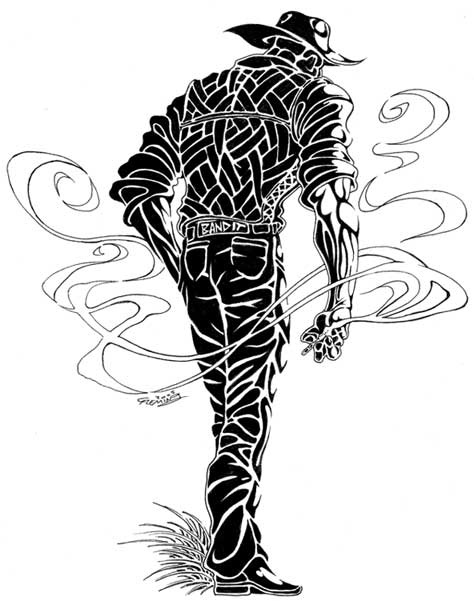
The Normal or Crazy Bikernet Weekly News for February 9th, 2023
By Wayfarer |
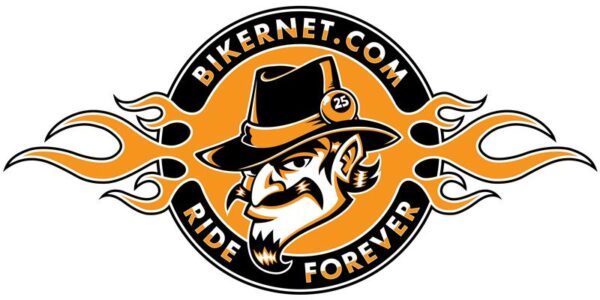
Hey,
I’ve been in touch with guys and girls all over the industry. It’s 20 degrees here in Sturgis and light snow flurries block the sun but motorcycle action is everywhere. Shows, auctions and action is happening even in the coldest areas. Hell, in my small shop I’m building two bikes and preparing for road testing of the Salt Torpedo.
— Bandit
Click Here to read the Weekly News only on Bikernet.com
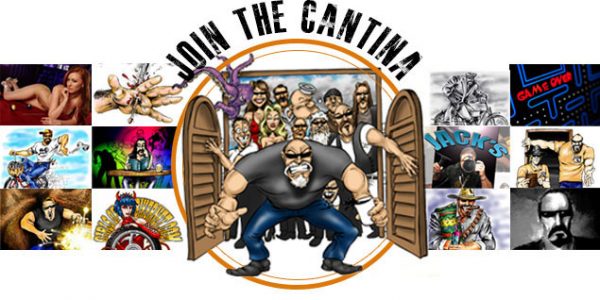
If you enjoy reading content on Bikernet.com then support our efforts by becoming a member of Bandit’s Cantina – click to know more.
Five Successes and One Major Failure
By Wayfarer |
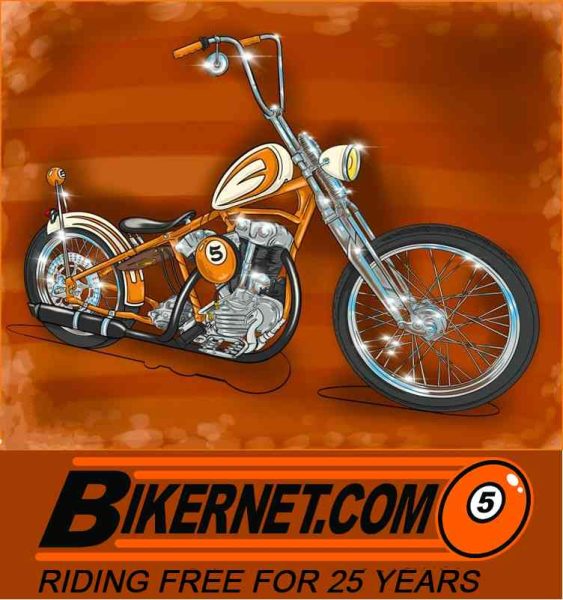
5-Ball VL, XA, FL 2022-2023 BUILD, Part 2
Okay, the South Dakota winter set in, my shop was complete and the Holidays were looking good in the Black Hills. I’ve got a batch of stuff to touch on. The other evening, I stumbled into the shop and started to dig for inspiration. I had five successes and one major failure. Let’s get started.
My first challenge was wheels and brakes. The second stumbling block was driveline alignment, rear wheel alignment, fender and seat. And finally, I tackled my notion for the handlebars.
Click Here to read this Tech only on Bikernet.com
* * * * * * * * * * * * * * * * * * * *

Follow all the news and updates by simply subscribing to our free weekly newsletter. Click to know more.
5-Ball VL, XA, FL 2022-2023 BUILD, Part 2
By Bandit |

Okay, the South Dakota winter set in, my shop was complete and the Holidays were looking good in the Black Hills. I’ve got a batch of stuff to touch on. The other evening, I stumbled into the shop and started to dig for inspiration. I had five successes and one major failure. Let’s get started.

My first challenge was wheels and brakes. The second stumbling block was driveline alignment, rear wheel alignment, fender and seat. And finally, I tackled my notion for the handlebars.

Let’s start with the last, the handlebars. I wanted highbars, but nothing traditional. As you saw in the first chapter, I struggled and then discovered Nash, handmade bars. They make them to order. But they couldn’t add my additional bend, and I wanted evil 13-inch bars.

When they arrived, I couldn’t just build a gig and bend them. They were too short, but that worked in my favor. I machined slugs out of solid stock.

I bent the slugs using a press and a lot of heat. It sorta worked, and they slipped right into the bars. I’m going to buy a new TIG welder next week, so I asked Cabana Dan to weld the slugs into place.


The bars are quirky, to say the least, and I’m not sure if I’m going to weld the dimples or leave them alone
I have a partial patina notion for the ultimate finish on this bike and I’m looking forward to it.
Since I’m in the Black Hills I seem to be surrounded by more motorcycle aficionados with more resources and more talents. I had several late-night discussions about the wheels and brakes. The options are endless but restricted by my Irish Rich VL frame and the XA front end.

After several talks, I picked up the phone and called Elliot and Eric at Black Bike Wheels. Here are some of the wheel options, when you are planning a ground up with exotic frames and front ends. I considered disc brakes all around, but I wanted a vintage flair and I’m not afraid of stock mechanical brakes.

Ultimately, I went for a star hub with Timken bearings, which means the stock axle won’t work. It will for set up, but one machined aspect is extended for the Timken bearings.

Charlie was able to supply most of the stock front brake components, but I needed to tighten up the rivets on the shoes with a punch and a hammer. I didn’t choose to have them bonded this time.

I ordered all the little shit, springs, axle, cork seal and cable clamp from Colony through Randy Cramer at Dakota V-Twin in Spearfish. I cleaned up everything and started assembly with a few nuts and spacers from Paughco.

I removed the Paughco rockers and pins. I wanted to use the Paughco pins with the stock rockers, but there are differences. I also ordered a new set of Rocker bushings from Colony and pressed the old ones out and the new ones into place.

We were able to order the Timken bearing axle for stock brake application from Custom Chrome. Paughco makes axles for a number of applications including stock springers. They will offer the Timken model in the near future, because it’s only a slight machining change.

I considered making a sleeve, but it would be super thin and not worth the trouble if the axles are available. I’m still waiting on the front brake cable and handlebar lever, which I hope comes from Barnetts.

I wanted to run a star hub on the rear, but I couldn’t run a stock mechanical rear brake because of some of the modifications to the frame. Stock linkage was no longer possible.

Steve from Paughco suggested a hydraulic rear brake and I ran down the canyon to see if Charlie had a complete rear brake system. He did and I tried it, but everything was too tight. I shifted to disc but two partners suggested a sprotor and recommended the Hawg Halters unit, because it includes a true four piston caliper.

I committed and ordered a rear wheel with a one-sided hub for a sprotor, which is super clean. I also ordered black hubs and rims with stainless spokes.
I needed ground clearance, or I might have run with the wheels on the bike. I went with a standard 21 on the front and a 19 rear, which took some investigation to find an approved rear 19-inch tire.

Everything hinged on alignment, before I can finish installing the engine and make a top motormount. I’ve ordered a 4-speed case from JIMS, which will house a 5-speed gear set. I found out that JIMS bought the case patterns from S&S and are starting to set up manufacturing. Might take some time. Yesterday, I was told I would have it on the 15th of March, the day before my 75th birthday.
Fortunately, I’m still a young punk.

Next, I messed with the rear wheel Hawg Halter and fucked up. This is not a standard rigid frame, but a VL, which has less space between the frame rails and a cast brake anchor mount. The caliper would not fit.


With the help of a Paughco rear axle and frame spacers, I was able to center the caliper over the sprocket and discovered an easy way to mount, too easy. I knew something was way too simple about this application and I sent images to a couple of brothers. Dan wrote back, “What about the chain.”

I made some measurements and with a Plasma cutter, cut out the stock brake anchor bracket. The caliper fit.

This put me into the position to set up the seat, fender, fender brackets, chain guard, etc. But I really needed driveline aligned first. I can’t attempt that without the transmission.


I dug around for fender options. I wanted to do something different and found several front fenders including one from an FXWG from the ‘90s. I was intrigued, and the fender bracket was poorly welded into place. It seemed to have damaged rivets, so with Dremel bits, I started to cut at the welds and rivets.

I completely failed at every attempt to separate the fender brackets from the fender. I ordered a replacement fender from Paughco sans the bracket strap. It will fit perfectly once I have it in my evil hands.

So, next is the seat pan system and rear fender. Hang on.
–Bandit
Sources:

Barnett’s clutch and cable
Clausen’s Machine Shop
Spearfish, SD
Dakota V-Twin
Spearfish, SD
www.dakotavtwin.com
JIMS Machine
McMaster Carr
www.mcmastercarr.com
Paughco
Shamrocks Customs
Sturgis, SD
S&S
Terry Components
Check on J&P Cycles
Nash Motorcycles
Black Bike Wheels
www.blackbikewheels.com
Custom Chrome
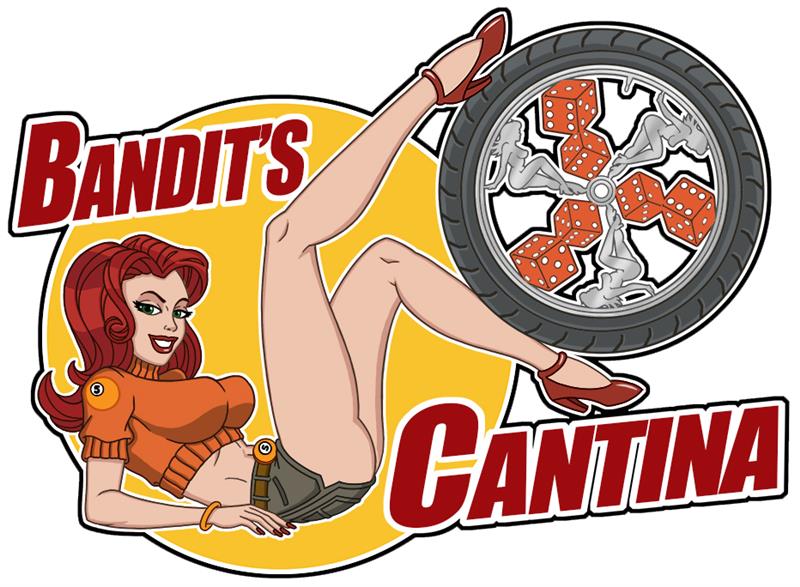
AMP IT UP
By Bandit |

My 2022 Harley Ultra came with a reasonable sound system, but my problem is hearing loss from when I was in the military. That prompted me to order an amplifier and new speakers. Life got in the way and I got behind schedule and needed some help getting it installed.
The system I chose was Harleys Rockford-Fosgate 400W – 4 Channel

My local dealer SPACE COAST Harley-Davidson in Palm Bay Florida came to the rescue and installed the new Rockford Amplifier and Speakers. They even took photos so that I could focus on writing this article. Hopefully it will help you decide if you want to try the install sound system components or have the dealership do it.
I decided to get some help on this install for a couple of reasons.
The factory suggests installation is done by a technician at a Haley dealership.
Even if you do the install yourself the newly installed audio system and speakers will not play audio unless it is configured using the Harley-Davidson audio app or by an authorized Harley dealership, sneaky.
I have handled numerous upgrades over the years, and this one can be done if you have the time, knowledge and tools. I did not have the time.
If you decide to do the install yourself here is what to expect.




You will need a Harley Shop Manual for The Motorcycle You Are Working On because the instructions that come with the parts reference service manual information. Follow the instructions to Remove, Saddlebags, Side Covers, Main Fuse, Fuel Tank, Left Side Caddy, Lower Backbone Caddy, Windshield, Outer Fairing and any other items in the instructions.
Read through all the instruction and follow them closely. The Space Coast techs started with the primary amplifier kit.
Take care not to damage the painted surfaces, position the drill template on the left saddlebag and use tape to secure it in place



Use a 2 ½ inch hole-saw and a 13/64 in drill bit, drill the holes. Trim the edges and debur the holes.
Clean all surfaces with a 50-70% isopropyl alcohol and a 30-50% distilled water. Allow to dry completely.

Follow instructions on mounting the amplifier to the mounting bracket paying attention to torque settings and wiring harness routing.
Test fit the mounting bracket. It must be straight, centered and as close to the bottom of the saddlebag as possible.

Use marker or masking tape to mark location. Peal the tape from the mounting bracket and install it to the marked location.
NOTE: Once the bracket is taped into place it will be very difficult to remove without damaging the bracket.
Stand saddlebag up on end and allow the tape to cure for at least 24 hours.

Mount saddlebag to check harness length. Leave enough length to easily connect to saddlebag.



Remove screws retaining OEM speaker grille and speaker. SAVE SCREWS. Remove Speaker Grille. Disconnect terminals and remove speaker from enclosure.
Repeat on opposite side of motorcycle.

Put wires on new speakers. They have different size spade connectors to prevent improper assembly.
The new speaker grilles are side specific. The Bar and Shield logos are oriented towards the inboard. Install the screws and torque to 14-19-inch pounds using a cross pattern when tightening


NOTE: Do Not Remove Any Screws Securing Enclosure Halves Together
Remove Speaker and OEM speaker grille from inner fairing.
Repeat procedure on other side.

The new speaker grilles are side-specific. Verify proper orientation of the Bar & Shield emblem before proceeding.
Install Speakers and wiring following instruction procedure and torque settings.
Install speaker enclosures paying close attention to details and torque specifications in the instructions.
Note: To Prevent Possible Damage To The Sound System, Verify That The Ignition Is Off Before Installing The Main Fuse.


Have a Harley-Davidson Technician program the new system.
Never Operate The Vehicle With The Speaker Enclosures Removed. The Enclosures Provide Important Structural Support To The Fairing. Operating Without The Enclosures In Place Can Result In Damage To The Fairing Assembly.
Before Installing Outer Fairing, Check That Speakers Are Operating Correctly. Understand That Buzzing, Squeaks And Rattles May Be Heard Until Outer Fairing Is Installed.
Install outer fairing and windshield paying close attention to bolt pattern and Torque Specifications.
Install Left Side Caddy, Top Caddy, Lower Backbone Caddy, Fuel Tank, Side Covers, Saddlebags, Seat and any other items removed.

NOTE: As Previously Stated This Article Is A Brief Outline Of The Install. Follow The Instructions That Come With The Parts to Be Installed And In The Harley Service Manual.
Or Even Better Bring The Motorcycle To The Dealership To Have It Done. I Am Happy That I Decided To have Space Coast Harley-Davidson Handle This Install.

Now I Am Rocking Out Rolling Down The Highway Listening To My Favorite Tunes.

